#Eco-FriendlyTechSolutions:ACrucialRoleinCombatingClimateChange
Explore tagged Tumblr posts
Text
Green Technology: A Game-Changer in the Fight Against Climate Change

The Impact of Green Technology on Climate Change: A Closer Look
In a world grappling with the escalating consequences of climate change, green technology has emerged as a beacon of hope. It represents a transformative approach to addressing environmental challenges by harnessing sustainable practices, renewable energy sources, and innovative eco-friendly tech solutions. In this article, we will delve into the realm of green technology, exploring its diverse facets, its impact on climate change mitigation, and its potential to usher in a more sustainable future for our planet.
1. Understanding Green Technology
Green technology, often referred to as clean technology or eco-friendly technology, encompasses a wide array of innovations and practices designed to minimize the environmental impact of human activities. Its primary aim is to reduce resource consumption, minimize waste generation, and lower greenhouse gas emissions. Let's take a closer look at some key components of green technology: 1.1 Renewable Energy Sources One of the cornerstones of green technology is the utilization of renewable energy sources, such as solar, wind, and hydroelectric power. These sources generate electricity without depleting finite resources or emitting harmful pollutants. Solar panels, wind turbines, and hydroelectric dams have become increasingly prevalent as the world seeks cleaner alternatives to fossil fuels. 1.2 Energy Efficiency Improving energy efficiency is another crucial aspect of green technology. This involves developing technologies and practices that consume less energy to achieve the same or even enhanced results. From LED lighting and smart thermostats to energy-efficient appliances and well-insulated buildings, energy efficiency plays a pivotal role in reducing carbon footprints. 1.3 Sustainable Transportation Green technology extends its reach to transportation solutions. Electric vehicles (EVs) have gained traction as a sustainable alternative to traditional gasoline-powered cars. Furthermore, advancements in public transportation systems, including electric buses and high-speed trains, contribute to reduced emissions and traffic congestion. 1.4 Waste Reduction and Recycling Efforts to minimize waste and promote recycling are fundamental to green technology. Innovations in waste management, such as waste-to-energy conversion and biodegradable materials, are helping to divert waste from landfills and reduce environmental harm.
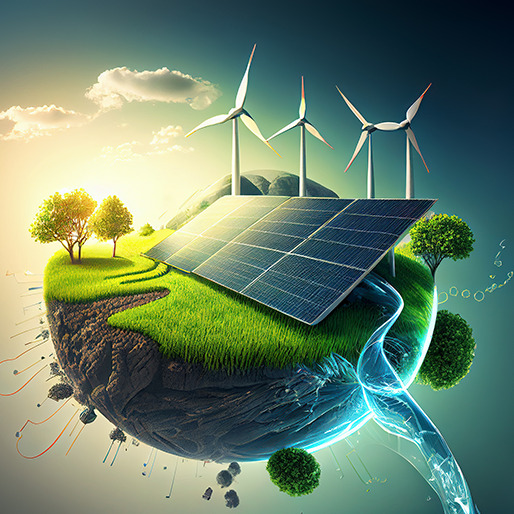
Green Technology Impact
2. The Role of Green Technology in Combating Climate Change
Now that we've established what green technology encompasses, let's explore its significant role in mitigating climate change: 2.1 Reduced Carbon Emissions The transition from fossil fuels to renewable energy sources is pivotal in reducing carbon emissions. Solar and wind power, in particular, produce electricity without emitting carbon dioxide, making them key players in the fight against climate change. As more countries adopt these technologies, the global carbon footprint is expected to decrease significantly. 2.2 Energy Independence Green technology promotes energy independence by reducing reliance on fossil fuel imports. Countries that invest in renewable energy sources become less vulnerable to energy supply disruptions and price fluctuations in the global market, enhancing their economic stability. 2.3 Sustainable Agriculture Innovations in agriculture, a critical component of green technology, enable farmers to adopt sustainable practices. These practices reduce deforestation, limit the use of harmful pesticides and fertilizers, and promote soil health. Sustainable agriculture not only combats climate change but also ensures food security for future generations. 2.4 Conservation of Natural Resources Green technology also focuses on conserving natural resources, such as clean water and forests. Technologies like water purification systems and sustainable forestry practices help protect vital ecosystems and biodiversity, which are essential for climate regulation.

The Impact of Green Technology
3. Innovations in Green Technology
To combat climate change effectively, green technology continually evolves and innovates. Here are some recent breakthroughs in the field: 3.1 Battery Technology Advancements in battery technology have accelerated the adoption of renewable energy sources. Energy storage solutions, such as lithium-ion batteries and emerging solid-state batteries, are making it possible to store excess energy generated by solar and wind installations for use during cloudy or windless periods. 3.2 Carbon Capture and Utilization (CCU) CCU technologies capture carbon dioxide emissions from industrial processes and convert them into valuable products or store them underground. This innovation helps industries reduce their carbon footprint while turning a liability into an asset. 3.3 Artificial Intelligence (AI) AI-driven algorithms optimize energy consumption in buildings, factories, and transportation systems. By analyzing data and making real-time adjustments, AI enhances energy efficiency and reduces waste. 3.4 Circular Economy The concept of a circular economy encourages reusing, recycling, and refurbishing products instead of producing and disposing of them. This approach minimizes waste and extends the lifespan of goods, reducing the strain on natural resources.
4. The Global Impact of Green Technology
Green technology is not limited to developed countries; it has a global impact. Developing nations are increasingly embracing eco-friendly tech solutions as they seek to balance economic growth with environmental sustainability. International collaborations and agreements, such as the Paris Agreement, encourage countries to commit to reducing emissions and investing in green technology.
5. Challenges and Future Prospects of Green Technology
While green technology holds immense promise, it faces certain challenges, including the initial high costs of implementation and the need for infrastructure upgrades. Nevertheless, as technology continues to advance, costs are likely to decrease, making green solutions more accessible.
Overview of Green Technology
Green technology represents humanity's collective effort to address climate change and build a sustainable future. By harnessing renewable energy sources, improving energy efficiency, and embracing sustainable practices, we can significantly reduce our carbon footprint. The innovations in green technology we've discussed are not only combating climate change but also creating opportunities for economic growth and a healthier planet. As individuals, communities, and nations, we must continue to support and invest in green technology to ensure a brighter, more sustainable future for generations to come. Read This Also 👉 Fiverr Affiliate Program. How to earn $1000 per month with Fiverr Affiliate? Watch Video 📺 👉 How to Earn Money Online? Create a Fiverr Buyer and Seller Account | Abhishek InfoTech

Read the full article
#10GreenTechInnovationsThatAreMakingaDifference#ArtificialIntelligence(AI)#BatteryTechnology#CarbonCaptureandUtilization(CCU)#ChallengesandFutureProspectsofGreenTechnology#CircularEconomy#ConservationofNaturalResources#Eco-FriendlyTechInnovationsThatAreChangingtheWorld#Eco-FriendlyTechSolutionsThatAreWorthInvestingIn#Eco-FriendlyTechSolutions:AComprehensiveGuide#Eco-FriendlyTechSolutions:ACrucialRoleinCombatingClimateChange#EnergyEfficiency#EnergyIndependence#GreenTechforDummies:ASimpleGuidetoEco-FriendlyTechnology#GreenTechSolutionstoCombatClimateChange:AComprehensiveGuide#GreenTechTrendstoWatchin2023andBeyond#GreenTech:ASolutionforOurClimateCrisis#GreenTechnology#GreenTechnologytotheRescue:HowEco-FriendlyTechSolutionsCanCombatClimateChange#GreenTechnology:AGame-ChangerintheFightAgainstClimateChange#GreenTechnology:AMust-ReadGuideforAnyoneConcernedAboutClimateChange#GreenTechnology:APowerfulToolforaSustainableFuture#GreenTechnology:ASolutiontoClimateChangeThat'sHereToday#GreenTechnology:TheFutureofaSustainablePlanet#GreenTechnology:TheFutureofCombatingClimateChange#HowGreenTechIsChangingtheWorldandCombatingClimateChange#HowGreenTechIsMakingOurLivesBetterandReducingOurCarbonFootprint#HowGreenTechnologyCanHelpUsFightClimateChange:AComprehensiveGuide#HowGreenTechnologyCanHelpUsSavethePlanet#HowtoInvestinGreenTechandMakeaDifference
0 notes
Text




Ducks.
Source: kkchenwei
#duck#ducks#cute#art#illustration#nature#cottagecore#fairy tale#fairytale#top post#fairy tale illustration#storybook#beautiful#eco#wholesome#wholesome animals#wholesome memes#cute aesthetic#aesthetic#esthetic
52K notes
·
View notes
Link
For the past few days, a heatwave has glowered over the Pacific Northwest, forcing temperatures in the region to a record-breaking 118ºF. Few people in the region—neither Americans nor Canadians—have air-conditioning. Stores sold out of new AC units in hours as a panicked public sought a reasonable solution to the emergency. Unfortunately, air-conditioning is part of what’s causing the unusual heatwave in the first place.
We came close to destroying all life on Earth during the Cold War, with the threat of nuclear annihilation. But we may have come even closer during the cooling war, when the rising number of Americans with air conditioners—and a refrigerant industry that fought regulation—nearly obliterated the ozone layer. We avoided that environmental catastrophe, but the fundamental problem of air conditioning has never really been resolved.
Mechanical cooling appeared in the early 1900s not for comfort but for business. In manufacturing, the regulation of temperature—“process cooling”—controlled the quality of commodities like cotton, tobacco, and chewing gum. In 1903, Alfred Wolff installed the first cooling system for people at the New York Stock Exchange because comfortable traders yielded considerably higher stock returns. Only in the ’20s did “commercial cooling” appear. On Memorial Day weekend 1925, Willis Carrier debuted the first centrifugal air-conditioning system at the Rivoli Theater in Midtown Manhattan. Previously, theaters had shut down in the summer. With air-conditioning, the Rivoli became “the talk of Broadway” and inaugurated the summer blockbuster.
-another direct tie to capitalism. Everything born out of colonio-capitalism carries its toxic mark. Article totally not under the cut for those who can’t pay for Time. It honestly paints a really clear picture of the situation. Bolding mine.-
“It’s time we become more comfortable with discomfort. Our survival may depend on it.“
Before World War II, almost no one had air-conditioning at home. Besides being financially impractical and culturally odd, it was also dangerous. Chemical refrigerants like sulfur dioxide and methyl chloride filled most fridges and coolers, and leaks could kill a child, poison a hospital floor, even blow up a basement. Everything changed with the invention of Freon in 1928. Non-toxic and non-explosive, Freon was hailed as a “miracle.” It made the modernist skyscraper—with its sealed windows and heat-absorbing materials—possible. It made living in the desert possible. The small, winter resort of Phoenix, Arizona, became a year-round attraction. Architecture could now ignore the local climate. Anywhere could be 65ºF with 55% humidity. Cheap materials made boxy, suburban tract housing affordable to most Americans, but the sealed-up, stifling design of these homes required air-conditioning to keep the heat at bay. Quickly, air-conditioning transitioned from a luxury to a necessity. By 1980, more than half of all U.S. homes were air-conditioned. And despite millions of Black Americans fleeing the violence of Jim Crow, the South saw greater in-migration than out-migration for the first time—a direct result of AC. The American car was similarly transformed. In 1955, only 10 percent of American cars had air-conditioning. Thirty years later, it came standard.
The cooling boom also altered the way we work. Now, Americans could work anywhere at any hour of the day. Early ads for air-conditioning promised not health or comfort but productivity. The workday could proceed no matter the season or the climate. Even in the home, A/C brought comfort as a means to rest up before the next work day.
The use of air-conditioning was as symbolic as it was material. It conveyed class status. Who did and didn’t have air-conditioning often fell starkly along the color line, too, especially in the South. It conquered the weather and, with it, the need to sweat or squirm or lie down in the summer swelter. In that sense, air-conditioning allowed Americans to transcend their physical bodies, that long-sought fantasy of the Puritan settlers: to be in the world but not of it. Miracle, indeed.
But it came with a price. As it turned out, Freon isn’t exactly non-toxic. Freon is a chlorofluorocarbon (CFC), which depletes the ozone layer and also acts as a global warming gas. By 1974, the industrialized world was churning out CFCs, chemicals that had never appeared on the planet in any significant quantities, at a rate of one million metric tons a year—the equivalent mass of more than 500,000 cars. That was the year atmospheric chemists Sherry Rowland and Mario Molina first hypothesized that the chlorine molecules in CFCs might be destroying ozone in the stratosphere by bonding to free oxygen atoms and disrupting the atmosphere’s delicate chemistry. By then, CFCs were used not only as refrigerants but also as spray can propellants, manufacturing degreasers, and foam-blowing agents.
The ozone layer absorbs the worst of the sun’s ultraviolet radiation. Without stratospheric ozone, life as we know it is impossible. A 1 percent decline in the ozone layer’s thickness results in thousands of new cases of skin cancer. Greater depletion would lead to crop failures, the collapse of oceanic food systems, and, eventually, the destruction of all life on Earth.
In the 1980s, geophysicist Joseph Farman confirmed the Rowland-Molina hypothesis when he detected a near-absence of ozone over Antarctica—the “Ozone Hole.” A fierce battle ensued among industry, scientists, environmentalists, and politicians, but in 1987 the U.S signed the Montreal Protocol on Substances that Deplete the Ozone Layer, which ended Freon production.
The Montreal Protocol remains the world’s only successful international environmental treaty with legally binding emissions targets. Annual conferences to re-assess the goals of the treaty make it a living document, which is revised in light of up-to-date scientific data. For instance, the Montreal Protocol set out only to slow production of CFCs, but, by 1997, industrialized countries had stopped production entirely, far sooner than was thought possible. The world was saved through global cooperation.
The trouble is that the refrigerants replacing CFCs, hydrofluorocarbons (HFCs), turned out to be terrible for the planet, too. While they have an ozone-depleting potential of zero, they are potent greenhouse gases. They absorb infrared radiation from the sun and Earth and block heat that normally escapes into outer space. Carbon dioxide and methane do this too, but HFCs trap heat at rates thousands of times higher. Although the number of refrigerant molecules in the atmosphere is far fewer than those of other greenhouse gases, their destructive force, molecule for molecule, is far greater.
In three decades, the production of HFCs grew exponentially. Today, HFCs provide the cooling power to almost any air conditioner in the home, in the office, in the supermarket, or in the car. They cool vaccines, blood for transfusions, and temperature-sensitive medications, as well as the data processors and computer servers that make up the internet—everything from the cloud to blockchains. In 2019, annual global warming emissions from HFCs were the equivalent of 175 million metric tons of carbon dioxide.
In May, the EPA signaled it will begin phasing down HFCs and replacing them with more climate-friendly alternatives. Experts agree that a swift end to HFCs could prevent as much as 0.5ºC of warming over the next century—a third of the way to the goals of the Paris Climate Agreement.
Yet regardless of the refrigerant used, cooling still requires energy. According to the U.S. Energy Information Administration, air-conditioning accounts for nearly a fifth of annual U.S. residential electricity use. This is more energy for cooling overall and per capita than in any other nation. Most Americans consider the cost of energy only in terms of their electricity bills. But it’s also costing us the planet. Joe Biden’s announcement to shift toward a renewable energy infrastructure obscures the uncertainty of whether that infrastructure could meet Americans’ outrageously high energy demand—much of it for cooling that doesn’t save lives. Renewable energy infrastructure can take us only so far. The rest of the work is cultural. From Freon to HFCs, we keep replacing chemical refrigerants without taking a hard look at why we’re cooling in the first place.
Comfort cooling began not as a survival strategy but as a business venture. It still carries all those symbolic meanings, though its currency now works globally, cleaving the world into civilized cooling and barbaric heat. Despite what we assume, as a means of weathering a heat wave, individual air-conditioning is terribly ineffective. It works only for those who can afford it. But even then, their use in urban areas only makes the surrounding micro-climate hotter, sometimes by a factor of 10ºF, actively threatening the lives of those who don’t have access to cooling. (The sociologist Eric Klinenberg has brilliantly studied how, in a 1995 Chicago heat wave, about twice as many people died than in a comparable heat wave forty years earlier due to the city’s neglect of certain neighborhoods and social infrastructure.) Ironically, research suggests that exposure to constant air-conditioning can prevent our bodies from acclimatizing to hot weather, so those who subject themselves to “thermal monotony” are, in the end, making themselves more vulnerable to heat-related illness.
And, of course, air-conditioning only works when you have the electricity to power it. During heatwaves, when air-conditioning is needed most, blackouts are frequent. On Sunday, with afternoon temperatures reaching 112ºF around Portland, the power grid failed for more than 6,300 residences under control by Portland General Electrics.
The troubled history of air-conditioning suggests not that we chuck it entirely but that we focus on public cooling, on public comfort, rather than individual cooling, on individual comfort. Ensuring that the most vulnerable among the planet’s human inhabitants can keep cool through better access to public cooling centers, shade-giving trees, safe green spaces, water infrastructure to cool, and smart design will not only enrich our cities overall, it will lower the temperature for everyone. It’s far more efficient this way.
To do so, we’ll have to re-orient ourselves to the meaning of air-conditioning. And to comfort. Privatized air-conditioning survived the ozone crisis, but its power to separate—by class, by race, by nation, by ability—has survived, too. Comfort for some comes at the expense of the life on this planet.
It’s time we become more comfortable with discomfort. Our survival may depend on it.
6K notes
·
View notes
Text


Tulip hot hair balloon
#flowers#green#nature#aesthetic#eco#hot air ballon festival#hot air balloon#dreamy#dreams#gardening#soft#waves#sky#clouds#vintage#France#country#countryside#ecopunk#feelings#emotion
9K notes
·
View notes
Text

What a Phenomena
Edit: I fucking forgot one
#sonic the hedgehog#*DEEP BREATH*#scourge the hedgehog#irish the hedgehog#johnny#ashura#chaos knuckles#shadow android#run chao#jet the hawk#hover wisp#cosmic the hedgehog#swifty the shrew#manic the hedgehog#i dont know if the last one has a name but hes from the sonic x comics#meme#Eco sonic
4K notes
·
View notes
Text

"be kind to all kinds"
#illustration#illustrator#art#drawing#botanical illustration#artists on tumblr#vegan#ethical#be kind#be kind to all kinds#animals#animal rights#activist#climate action#climate crisis#eco warrior
13K notes
·
View notes
Text
There is a very specific sort of trauma which comes from being a small child, being told about widespread ecological destruction. Trauma which does not come from that initial fact - but rather the adult response to that child’s inevitable question of “What can we do about it!”
Even in grade school I recognized the inherent absurdity of being told about the massive destruction of rainforests - particularly the amazon - but then being told that if we want to help we can “Recycle Cans” or whatever.
And I think that to a certain extent that trauma has a somewhat malevolent yet subtle intention. When you make small children think that the world is dying because they ate a chocolate bar in plastic wrap - you foster a sense of preexisting damnation which cannot be meaningfully fought.
Alternatively when you make children think that adults have no plan or interest whatsoever to tackle the problem, you foster a worldview in which the children have an actively antagonist relationship to older generations. Given the power dynamics between children and adults however, this is just as likely to produce crushing despair as it might prompt furious rebellion.
Both paths ultimately lead toward learned helplessness and general misanthropy, ensuring that resistance to ecological destruction is minimal. Stifling the emotional ecological connection of every person who was once a child filled with the wonder of a tall tree, a grassy meadow, or the first squirrel they ever saw.
Capitalism sustains itself through mass-trauma, and this is only one small piece to the larger situation. However it is a piece I find personally meaningful to discuss given my focus on environmentalism.
29K notes
·
View notes
Text
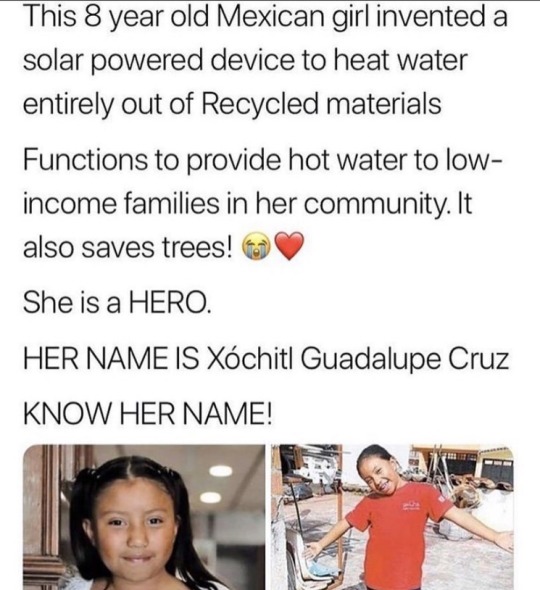
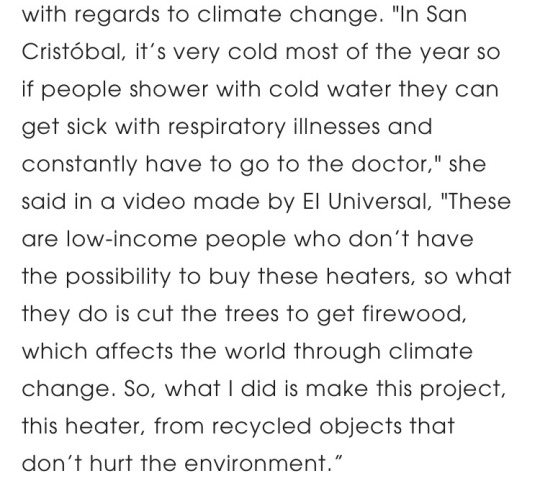

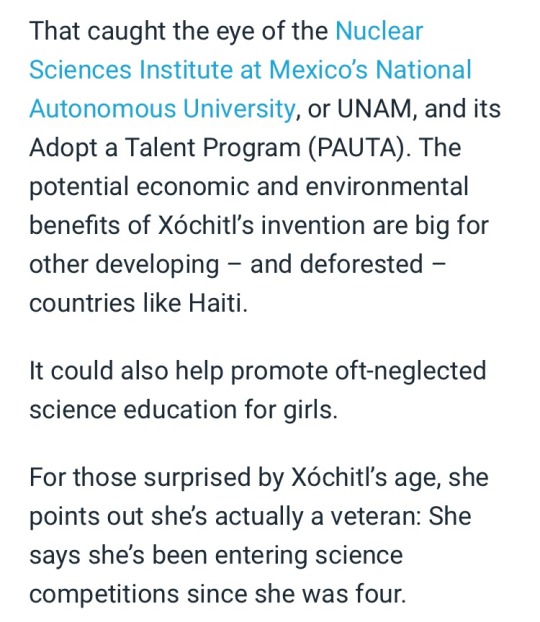


Xóchitl Guadalupe Cruz
Let’s give it up for another amazing young scientist! ❤️
#i love her!! what a sweetheart#she deserves everything#environment#environmentalism#stem#science#scienceblr#climate change#sustainability#sustainable#solarpunk#solar punk#eco
36K notes
·
View notes
Text
Update on Barbie’s Haunted Pastel Office:

We got the ceiling up! Still got a second coat to do on the trim, but otherwise it looks pretty damn good!
1K notes
·
View notes
Text
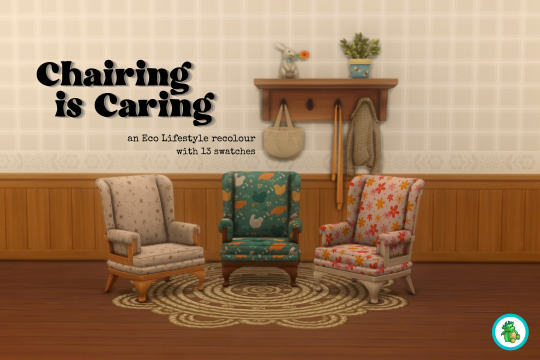
Chairing is Caring
Oh hiii, it's me again! Clearly my last piece of CC was a fluke, because I'm back with some more cottagecore themed stuff lmao
Just a very simple and cute recolour of the Eco Lifestyle armchair, featuring 13 different patterns and a few different wood tones. I actually really liked making this, so fingers crossed you like it too!
@maxismatchccworld @mmoutfitters
Details, swatch preview and download under the cut
Eco Lifestyle is required for this to work (sorry!)
Custom catalogue thumbnail
13 different swatches (see the additional swatch previews below)

Download at SFS (ad free)
Download at Patreon (public, also ad free)
#sims 4#the sims 4#ts4#sims 4 cc#ts4 cc#maxis match#maxis match cc#simblr#my cc#sims 4 custom content#ts4 custom content#ts4 buy mode#sims 4 buy mode#buy mode#ts4 buy cc#sims 4 buy cc#sims 4 cottagecore#sims 4 eco lifestyle#sims 4 cute cc#build buy cc#sims 4 chair cc#ts4 chair cc
2K notes
·
View notes
Text
part of the problem with conscious consumerism is how exhausting it is--every week there’s some article about how cloth bags are actually worse than plastic bags, or wait no the reusable ones are bad too, and have you considering that houseplants can be bad for the earth as well? And it’s so easy to get caught up in this whirlwind of micromanaging all these tiny choices and feeling immense guilt for making the wrong ones, instead of realizing the more straightforward and more radical truth that unsustainable practices will not change until our political and economic systems do
its a trap, and we’re not going to get out of it until what matters is standing up to colonialism and capitalism and not fretting about which kind of grocery bag is the least bad for the environment
#conscious consumerism#environmentalism#anti-capitalism#colonialism#capitalism#the environment#green capitalism#eco socialism
4K notes
·
View notes
Photo
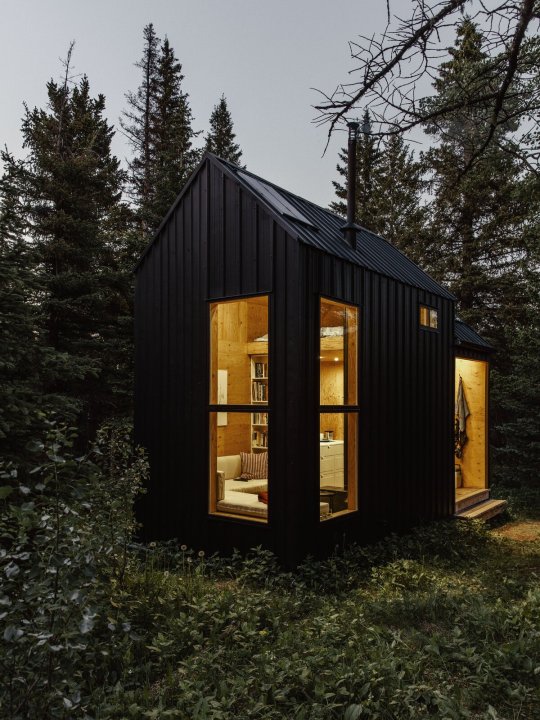

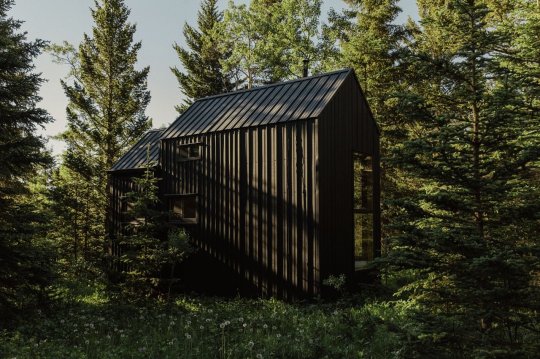
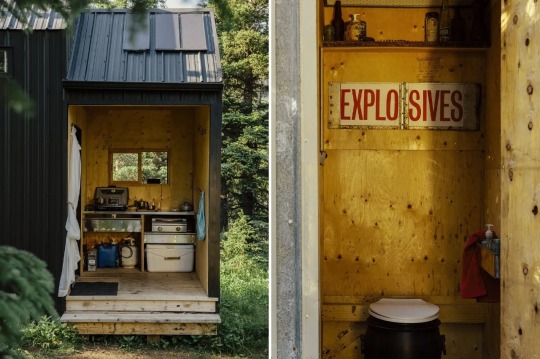

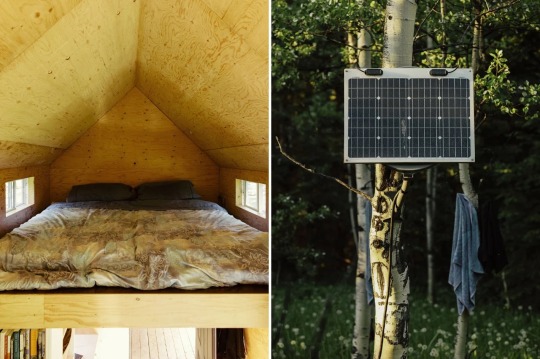
Nathalie and Greg Kupfer’s Micro-Cabin, Canmore, Alberta, Canada,
The forested retreat cost the couple $2,109. Included in the project’s net cost, Nathalie and Greg put out an additional $20 to build and furnish an outhouse on the property. Once the cabin’s build reached completion, the DIYers got back almost all of the $2,109 they spent on construction by selling unneeded building material they bought through bartering.
#art#design#architecture#interiors#cabin#micro-cabin#tinyhouse#retreat#canada#alberta#canmore#greg kupfer#nathalie kupfer#sustainable architecture#self-sustaining#eco-friendly#nature#recycling
821 notes
·
View notes
Text
Solarpunk Post
I've read a lot of solarpunk posts and they are really useful, but there's always a lot of US resources not applicable to me, so I wanted to create a post with UK resources as well. There's a lot of general information for everyone too so please take a look.
The Orchard Project: Maps showing community orchards across England
Abundance network: Advice on starting a fruit picking group, orchard maps in England and how to make an edible high road
Friends of the earth group locations
Food not bombs group locations
Wildlife trust volunteering near you
Native UK plants
Real seeds and vital seeds: great place to buy seeds from, all organic, some rare heritage varieties and resources on seed saving
More resources:
What you can do with soda cans
Basic clothes repair guide
How to fix broken apple products
PFAF: amazing resource on edible, medicinal and useful plants
Guide on preserving food
How to make your own sanitary towels
Fixing the length of your jeans
(Added on-) Record how many or how little birds you see for the big garden birdwatch every January in the UK, helping scientists to record bird numbers
(Added on-) There’s also the big butterfly count in May for the UK too, and can help keep track on butterfly populations - you can do counts in parks if you don't have a garden
Recommended books:
The Rurbanite by Alex Mitchell: Covers growing food, foraging, identifying wild things and looking after chickens and bees, now avaliable to read on the internet archive for free here!
The Thrifty Forager by Alys Fowler: amazing guide on foraging
The Edible Balcony by Alex Mitchell: Growing food in small spaces, mostly roofs and balconies
Thanks for reading guys! If you have any links of your own you can add them. Or you could try making one for where you live, it may seem daunting but you will be surprised by what you can find
Edit: There is a bee count somewhere, I can't find it but if anyone has links that woukd be great
#gardenblr#gardening#plantblr#nature#outdoor gardening#garden#plants#growing#foraging#solarpunk#eco#uk
2K notes
·
View notes
Photo










The Old Shipyard (Residential)
Unlike in Interstellar, space won‘t be a problem in this refurbished shipyard. While maintaining the industrial charm of what it once was, this place invigorates what it means to not just reside but live in a home. You‘ll find that open and lofty rooms don‘t only give you room to breathe but also to create! A space like this is hard to find – but once you do, you‘ll see that it facilitates ideas and art like none other. If you want to watch the evening sun set over Port Promise, come right in!
2 Bedrooms, 4 Bathrooms
The Waterfront in Evergreen Harbor (40x30)
574.908 Simoleons
Packs Used: Cottage Living, Snowy Escape, Eco Lifestyle, Discover University, Island Living, Get Famous, Seasons, Cats & Dogs, City Living, Get Together, Get To Work, Dream Home Decorator, Journey to Batuu, Vampires, Dine Out, Spa Day, Outdoor Retreat, Moschino, Bowling, Movie Night, Cool Kitchen, Industrial Kit
+ contains custom content by @felixandresims and @harrie-cc. You’ll find a full CC list with links in the patreon post.
download: free on patreon / origin @ honeybellabuilds
youtube
#ts4 lets play#ts4 build#ts4 lot download#download#photo studio#moschino#loft#factory conversion#industrial#2 beds#40 x 30#evergreen harbor#eco lifestyle#harrie-cc#felixandresims#modern#historical#1900s#cc filled#city living
945 notes
·
View notes
Text








If you’ve been trying to go plastic free for awhile you’ve probably accumulated quite a few jars some way or another. I often buy in jars and will keep them for upcycling, but sometimes I run out of ideas on how to reuse them. These are some good ways to repurpose those jars. In addition to these some zero waste stores will take cleaned jars for people who don’t have containers but are looking for a refill. While some of these are exclusively for glass, some of these ideas work for plastic containers too! Happy upcycling!
photo credit to zerowastenerd on instagram
#sustainability#sustainable#low waste#zero waste#low impact#slow living#eco friendly#reduce#eco conscious#sustainable living#upcycle#upcycling#jars#reuseable#reuse#reusedmaterials#reduce plastic#life without plastic#plastic free#plastic free july
2K notes
·
View notes
Text
Solarpunk to me doesn't mean green and bright everywhere. Instead, it's working with the available environment and harmonizing with it. Living in deserts and learning practical methods of water-finding, homes in the bases of mountains. Protecting existing dark forests, cultivating ones where deforestation once took over the land. And cultural preservation. The architecture of different cultures being preserved, native wildlife sewn into the foundations. It wouldn't all be those images that pop up when you first type 'solarpunk'. It would be extremely varied, a celebration of both biome diversity and human cultural diversity.
4K notes
·
View notes